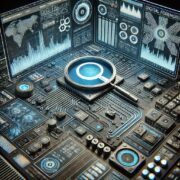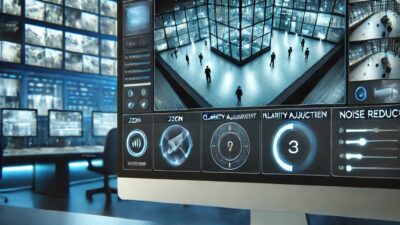The term quantum in “quantum computing” denotes quantum mechanics used by the system to calculate outputs. In physics, a quantum refers to the tiniest possible unit of any physical element. It refers to the constituent properties of atomic or subatomic particles, such as photons, neutrinos, and electrons. Thus, quantum computers draw from the special behaviour of quantum physics, such as quantum interference, superposition, and entanglement, and use it in computing. Entanglement and superposition enable supercomputers to support operations at speeds relatively higher than traditional computers with minimal consumption of energy.
Quantum computing is the latest edition of computing technology which involves a particular type of computer which is 158 million times faster compared the most advanced supercomputer in existence today. It is a tool with such great capabilities that it could only take four minutes to perform a task that would take a traditional supercomputer ten thousand years to finish.
How Do Quantum Computers Work?
Quantum computers conduct calculations according to the probability of the object’s state prior to its measurement, in place of 1s and 0s, meaning that there is the possibility of processing more data compared to traditional computers. Traditional computers perform logical operations through the use of the exact position of a physical state. Traditional computers are usually binary; their operations are based on one of two positions. Thus, a bit is made up of a single state, up or down, on or off, 1 or 0.
When it comes to quantum computing, operations employ the quantum state of an object for the production of what is referred to as a qubit. These are the non-specific properties of an object prior to its detection, such as an electron spin or photon polarization. Instead of having a specified position, an unquantified quantum state take place in a mixed ‘superposition,’ not the same as a coin spinning in the air before landing on your hand.
Such superpositions can be entangled with those from other objects, which means that their final results will be mathematically linked even if we have no idea what they are. The sophisticated mathematics that explains these unsettled entanglement states ‘spinning coins can be connected to special algorithms to shorten the problem in tasks that would take a traditional computer age to work out.
Why Do We Need Quantum Computers?
When engineers and scientists come across complex problems, supercomputers are their only solution. These are huge traditional computers, usually with thousands of traditional GPU and CPU cores. However, supercomputers also face difficulties when it comes to some kinds of problems. If a supercomputer is baffled by a particular problem, it is usually because the traditional mammoth machine was asked to tackle an issue with high levels of complexities. Traditional computers usually fail due to complexities.
Complex problems involve problems with several variables intertwined in a complicated way. Manipulating the behaviour of each atom within a molecule is a complex issue because of all the various electrons intertwined with each other.
Why is Quantum Computer Faster?
Let’s examine instances that demonstrate the supremacy of quantum computers over classical computers. Supercomputers may be good at solving difficult tasks such as sorting through a large information pool of protein sequences. However, it will face difficulties when it comes to determining the behaviours of such proteins. Proteins are long amino acid strings that materialize into important biological machines when they fold into complex shapes. Determining how proteins fold is an issue with crucial medical and biological implications.
A traditional supercomputer may attempt to fold a protein with too much force, taking advantage of its numerous processors to determine every possibility of bending the chemical chain before landing on an answer. However, as the complexity and length of the protein sequence increase, the supercomputer stumps. A chain of 100 amino acids could hypothetically be folded in any one of the trillions of options. No classical computer has the abilities determine all the potential combinations of each fold.
Traditional computers cannot develop such computational spaces; therefore, it is impossible for them to identify such patterns. Early quantum algorithms already exist that can determine the folding patterns in new, increasingly efficient ways with no need for the tiresome examination processes of classical computers. As quantum hardware production increases and this algorithm develops, they could tackle any protein folding issues too complex for any supercomputers.
Quantum algorithms take a novel approach to these types of difficult issues, generating multidimensional spaces in which patterns connecting individual data points emerge. Because traditional computers are incapable of creating these computational regions, they are unable to detect patterns. In the case of proteins, there are already early quantum algorithms that can find folding patterns in whole new, more efficient methods without the need for the time-consuming testing procedures used by traditional computers. As quantum technology and algorithms improve, they may be able to solve protein folding issues that are too difficult for any supercomputer to handle.
What are the Major Challenges in the Future of Quantum Computing?
- Determining a Workable Approach
Quantum computing can be implemented in a number of different ways. Due to the high investment costs of quantum computing and quantum circuits, experimenting with various ways will be time and money consuming. The most likely solution presently appears to be separate techniques for different purposes. The Analog quantum model, universal quantum gate model, and quantum annealing are some of the current methodologies being investigated by QC firms.
- Producing Stable Quantum Processors and Error Correction
It is necessary to undertake manipulations at lower scales, perhaps smaller than an atom, to use quantum mechanics’ features. Stability and error verification issues are exacerbated at small sizes.
The value of error correction in qubits, according to quantum researchers, is more than the total amount of qubits gained. Complex issues remain difficult to tackle because qubits cannot be precisely controlled.
- Sustaining the Expensive Costs of Operations
Stability and error correction is dependent on advances in technological investment, research resources, and quantum mechanics. Various groups are experimenting with various ways in order to acquire the most accessible quantum computing technology. It will take some time to determine which technique will be successful in certain locations.





Comments